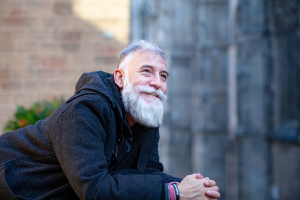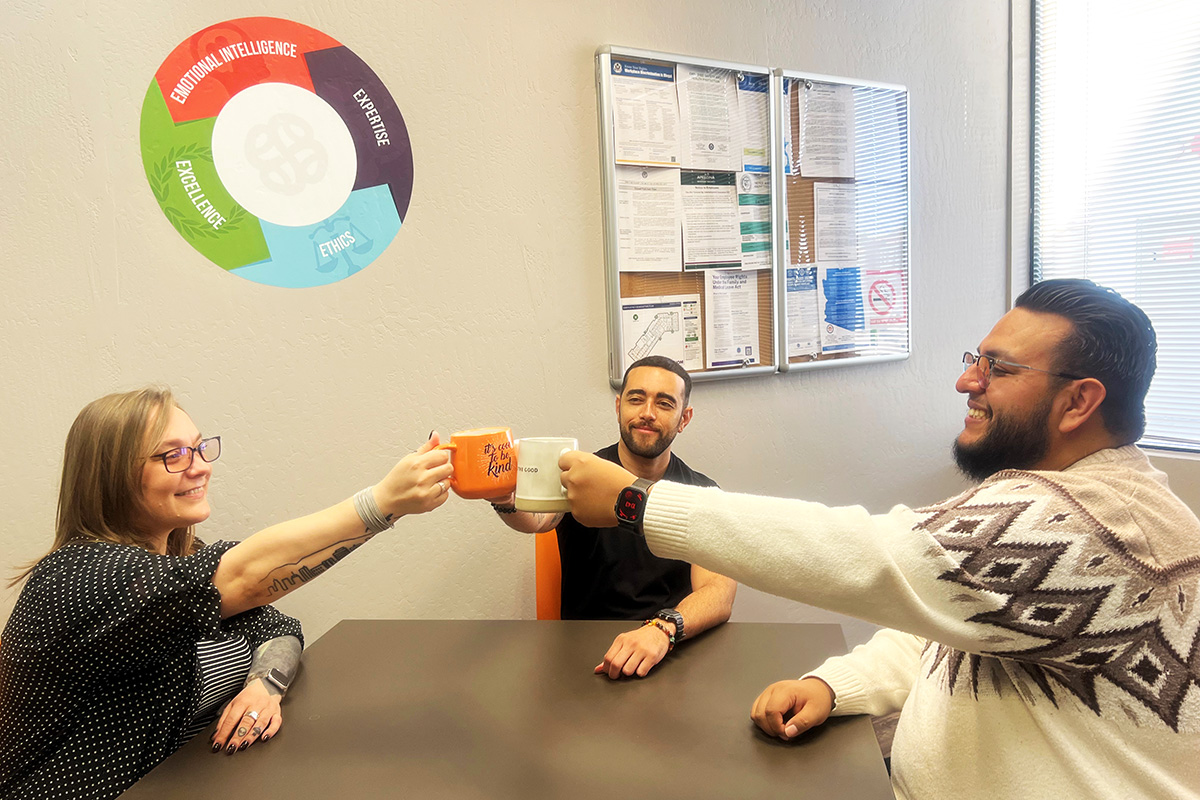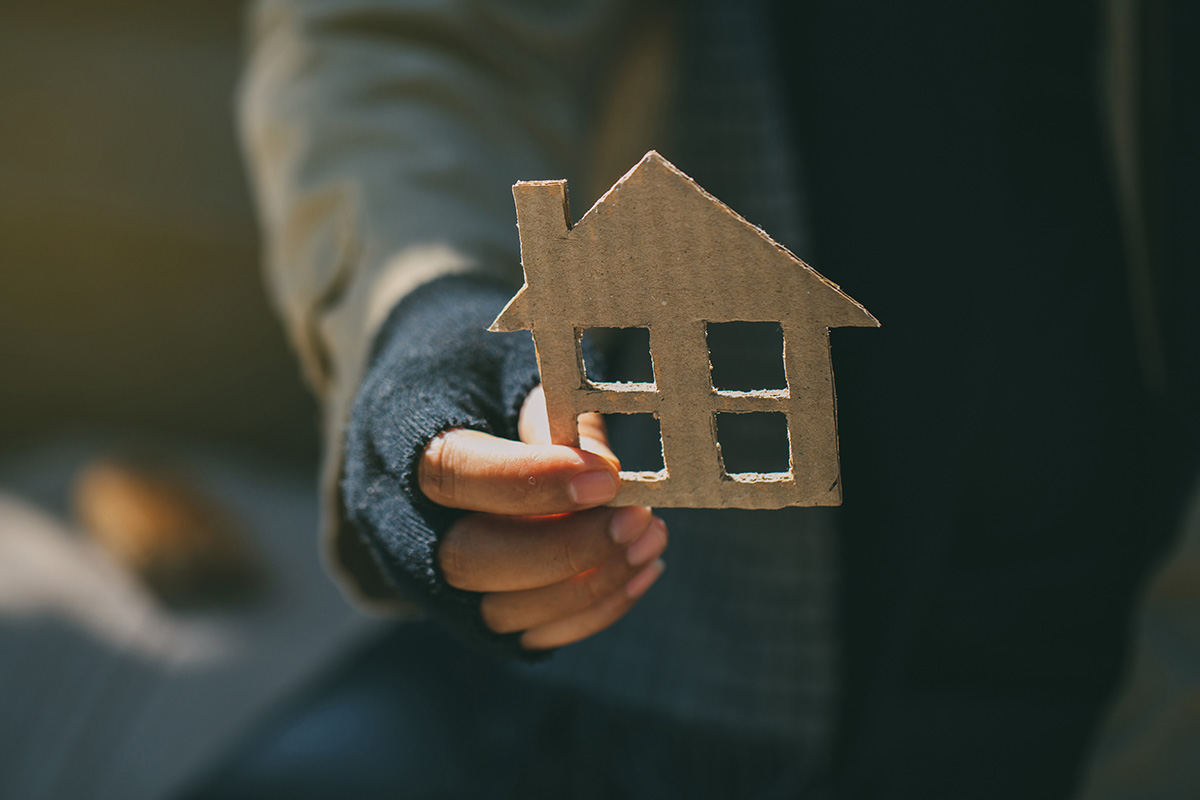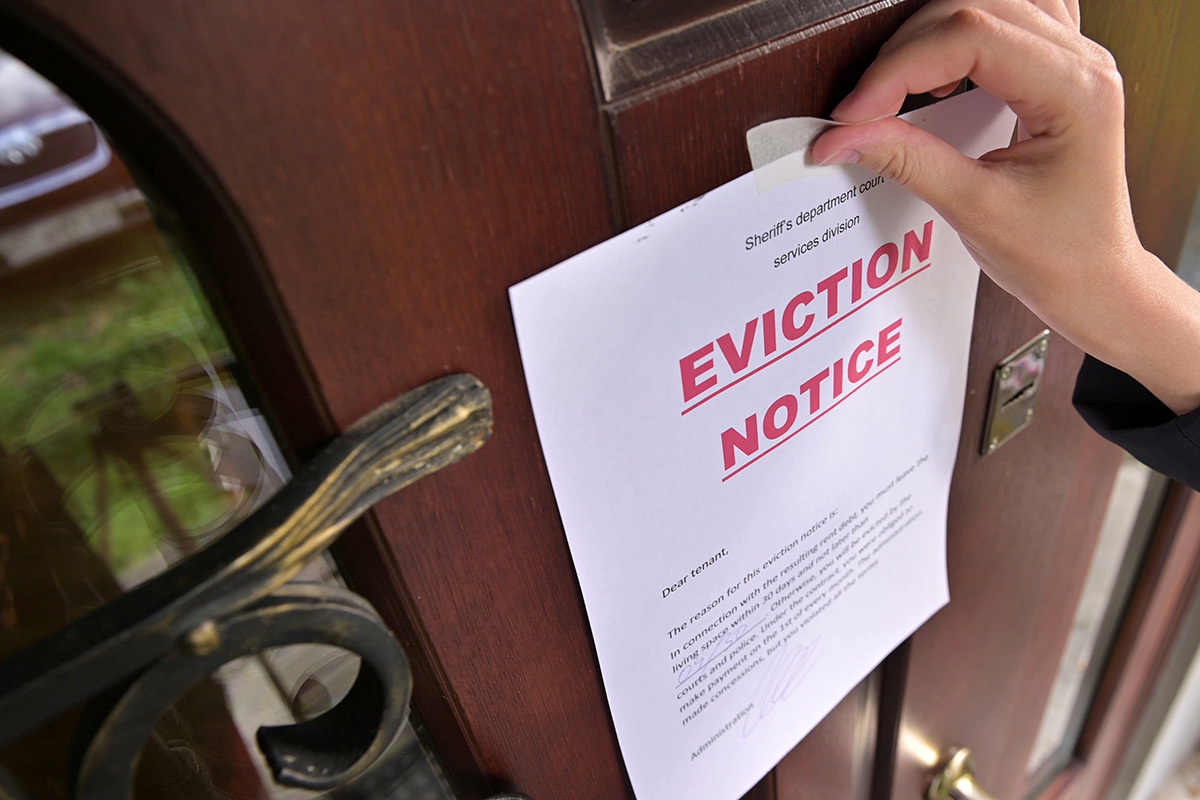Housing First: A Pathway to Ending Homelessness
In Arizona, the shadow of homelessness looms large, with thousands of individuals and families grappling for stability in a state where affordable housing is increasingly scarce. This crisis isn’t just a local issue — it’s a national emergency that demands bold, compassionate solutions. One proven approach that has reshaped how communities tackle homelessness is Housing First, a transformative model that prioritizes immediate access to permanent homes without preconditions.
At HOM, we’ve embraced Housing First as a guiding principle, but it’s not exclusive to us — it’s a global framework adopted by countless organizations. For over 30 years, HOM has been a leader in Arizona’s fight against homelessness, and Housing First is at the heart of our mission to build stronger communities.
But what exactlydoes is Housing First? In this blog, we’ll unpack the Housing First model, explore its universal impact, and show how HOM and our partners leverage it to create lasting change, one home at a time.
What is Housing First?

The Housing First model is a proven, compassionate approach that puts stable housing at the forefront of the fight against homelessness.
Housing First is rooted in a simple yet powerful idea: people need the safety and security of stable housing to pursue a meaningful and productive life. Using data-proven psychological models like Maslow’s Hierarchy of Needs, Housing First seeks to resolve someone’s experience of homelessness by providing housing, to enable them to pursue stability. Unlike traditional models that require individuals to “earn” housing through sobriety, employment, or program participation, Housing First provides immediate access to permanent homes without any preconditions. After someone’s immediate needs of shelter and safety are met, they can thrive and achieve their goals, whether they are employment, health, social, or life skills related.
“As a child we are taught each person needs clean water, food, clothing, and shelter. It’s difficult to achieve your life goals when you fear for your safety, are food insecure, and are battling to simply survive,” says Daniel Davis, Director of Landlord Relations at HOM. “Finding healthier ways to cope than substance use is unlikely when you are malnourished. Staying on medication is difficult when you are fearing for your safety.”
Pioneered in the 1990s by Sam Tsemberis through Pathways to Housing in New York, the Housing First model has since become a global standard, adopted by governments, nonprofits, and agencies worldwide—not just HOM.
The core principles of Housing First are straightforward:
- Housing first, not last: Provide stable housing as the starting point, not as a reward.
- Individual choice: Empower participants to make decisions about their housing and services.
- Tailored support: Offer voluntary services like mental health care, job training, or addiction support based on individual needs.
- No barriers: Remove obstacles like income requirements or “readiness” tests.
Research backs its effectiveness. Studies, such as those from the U.S. Department of Housing and Urban Development (HUD), show Housing First reduces chronic homelessness by up to 88% in some programs, improves health outcomes, and lowers public costs for emergency services. It’s a flexible, evidence-based framework that works across diverse populations.
Why Housing First Matters

Housing First is more than just a roof — it’s a path to dignity, stability, and opportunity.
The impact of Housing First extends far beyond a roof overhead. For individuals, it’s a lifeline to dignity and opportunity. A stable home provides the foundation for pursuing education, securing employment, or managing health conditions — goals often out of reach when survival is the daily focus. For communities, Housing First fosters safer, healthier neighborhoods by reducing the strain on shelters, hospitals, and police services. In Arizona, where over 13,000 people experienced homelessness in 2023, this model offers a practical path forward.
A common misconception is that Housing First is “housing only.” In reality, it pairs permanent housing with voluntary support services, ensuring clients have the tools to thrive. Its flexibility makes it effective for veterans, families, and individuals experiencing chronic homelessness alike. By prioritizing housing as the first step, Housing First flips the script on traditional approaches, proving that stability breeds success.
“All the pieces of our lives that keep each of us housed are based on our basic needs being met. It’s hard to get a job when you don’t have access to a shower or clothing,” says Davis. “Planning how you will accomplish your daily responsibilities is difficult when you are not sleeping at night due to fear for your safety.”
How HOM Uses Housing First
At HOM, we’re housing experts dedicated to ending homelessness through partnership and precision. For more than 30 years, we’ve supported nonprofits and public agencies across Arizona in implementing and strengthening their housing programs. Our partners are the frontline experts — bringing deep knowledge, compassion, and specialized services to the individuals and families they serve. Together, we apply the Housing First approach as a shared blueprint, tailoring it to Arizona’s unique needs. While our role is to streamline processes and provide critical infrastructure, it’s our partners who deliver direct support and lasting impact. Their leadership and innovation drive the success of Housing First — and we’re proud to help make it possible.
Here’s how Housing First is put into action:

Housing First is powerful—but challenges like Arizona’s housing shortage and funding gaps remain.
Rapid Housing Placement
True to Housing First’s no-barrier ethos, we prioritize moving clients into permanent homes quickly. Whether it’s a single adult or a family, we minimize delays to provide stability fast.
Streamlined Processes
We manage the complexities of voucher administration, property inspections, rent calculations, and lease and contract execution. By streamlining bureaucratic processes, we help ensure that housing placements happen quickly and support Housing First’s emphasis on immediacy.
Client-Centered Support
Housing First emphasizes autonomy, so we empower clients to choose their housing and services. We partner with integrated health care and nonprofit social service providers to offer tailored support — such as case management, mental health care, or job training.
Collaborative Ecosystem
At HOM, resources like Padmission and Threshold enhance our Housing First approach. Padmission’s tech platforms streamline property listings and rentals, while Threshold builds landlord relationships to expand housing options.
Furthermore, programs such as Permanent Supportive Housing (PSH) and Rapid Re-Housing (RRH) embody Housing First by combining stable homes with voluntary services.
HOM’s Impact Through Housing First
The numbers tell a powerful story. Since 2018, HOM and our partners have helped over 12,000 people transition out of homelessness into permanent homes, with Housing First as our guiding light. Each month, we collectively support more than 4,800 households across Arizona, channeling millions in housing assistance to provide stability. These aren’t just statistics — they are families reunited, veterans rebuilding, and communities growing stronger.
Our Housing First approach drives these outcomes by prioritizing rapid housing and tailored support. A stable home means a parent can focus on their children, not their survival. It means a senior can access healthcare without fear of eviction. By removing barriers and streamlining processes, we maximize every dollar and minute, ensuring more Arizonans find homes.

Since 2018, HOM and our partners have helped over 12,000 people find permanent homes — and we’re just getting started.
Our partners are leading the way in delivering effective Housing First programs across Arizona. Their leadership and direct service work are at the heart of this effort. We’re proud to support and collaborate with them as they implement and expand solutions to homelessness, one home at a time.
Current partners include:
- Arizona Behavioral Health Corporation (ABC)
- Community Bridges, Inc. (CBI)
- UMOM New Day Centers
- A New Leaf
- one∙n∙ten
- Arizona Department of Veterans’ Services
- Save the Family
- Tempe Community Action Agency (TCAA)
Learn more about all our partners and their impact at hominc.com/partners.
Challenges and the Road Ahead
Despite its success, Housing First faces hurdles. Arizona’s shortage of affordable housing, limited funding, and misconceptions about homelessness pose challenges. At HOM, we tackle these head-on. Our advocacy pushes for more housing resources, while Threshold’s landlord engagement program expands rental options and Padmission’s tech innovations streamline operations to house people faster. But we can’t do it alone.
We invite you to join the movement. Nonprofits are leading the way with innovative, compassionate programs that bring Housing First to life. Funders are driving impact by investing in what works. Thought leaders are shaping policies that reflect realities on the ground realities. HOM is here to support, connect, and help scale these efforts—so that together, we can ensure every Arizonan has a place to call home.
Join the Movement
Housing First is more than a catchphrase—it’s a rallying cry to end homelessness by putting homes first. By streamlining housing programs, empowering clients, and partnering with nonprofits, we turn Housing First into real-world impact, helping thousands find stability.
And we’re not done yet. Together, we can build a future where every Arizonan has a home, and homelessness is a thing of the past. At HOM, we are not just dreaming of stronger communities — we’re making them happen, one home, one life, one partnership at a time.
Let’s keep going!









